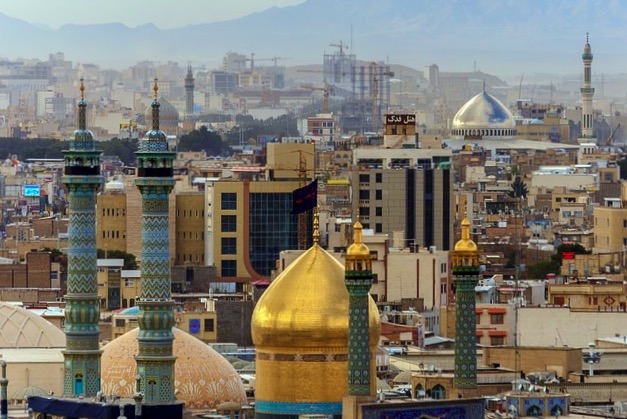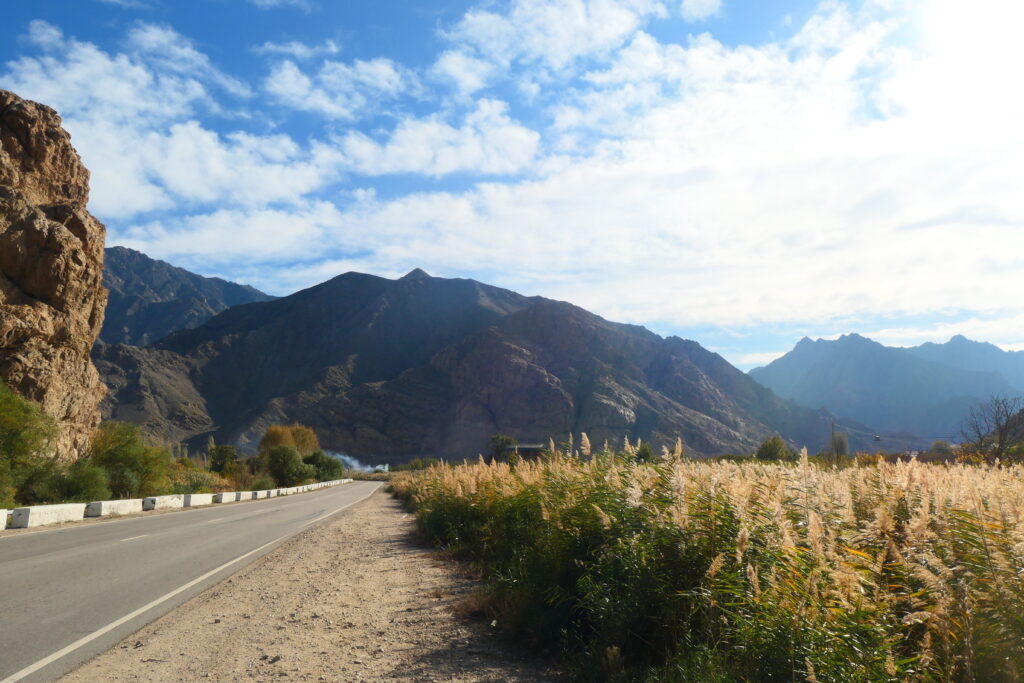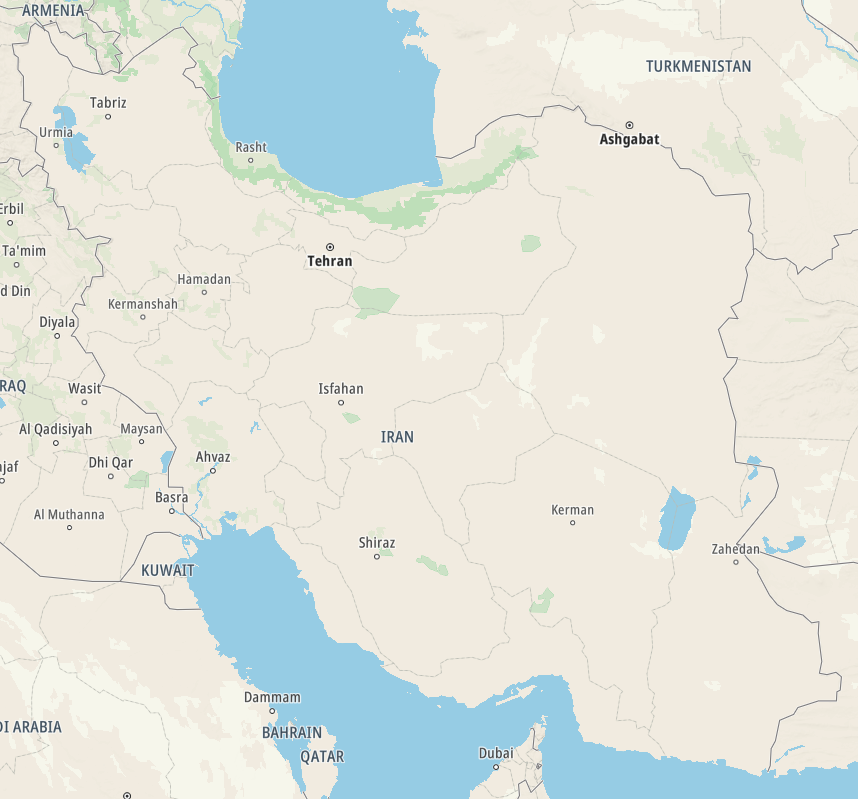Iran / جمهوری اسلامی ایران / Jomhuri-ye Eslâmi-ye Irân – Let’s explore here
What’s it like in Iran?
Iran is a large, beautiful country in central Asia. In fact it is one of the world’s most mountainous places. At about 6½ times the size of the UK, in the north lie lush forests, whereas in the east there are deserts and salt lakes. It sits in a seismically active area, with large earthquakes every decade on average. The highest point is the volcano, Mount Damavand, in the north of the country, near to the Caspian Sea, at 18,402 ft (5,609 m) above sea level.
It has a very long, rich and troubled history, including being home to some of the oldest civilisations on the planet. Its neighbours include Afghanistan, Armenia, Azerbaijan, Iraq, Turkmenistan and Turkey.
The population of Iran is around 86 million people (2024), about one in six of whom live in the metropolitan area of the capital, Tehran. It relies heavily on its oil and gas reserves.


A bit about the history of Iran
Ancient Persia and Early Civilisation
The history of Iran, historically known as Persia, dates back to one of the earliest known civilisations. The Elamites, an ancient civilisation, flourished in the region around 3000 BC. However, Iran’s history is most significantly marked by the rise of the Persian Empire under the Achaemenid dynasty in the 6th century BC. Founded by Cyrus the Great, the Achaemenid Empire became one of the largest empires in history, stretching from the Indus Valley to Egypt and Europe. The empire was known for its administrative innovations, infrastructure projects and religious tolerance.
Classical Period and Conquerors
Following the fall of the Achaemenid Empire to Alexander the Great in 330 BC, the region came under the control of various Hellenistic kingdoms, most notably the Seleucid Empire. This period led to the spread of Greek culture, but Persia soon regained its independence under the Parthian Empire (247–224 BC). The Parthians were later replaced by the Sassanid Empire (224–651 BC), which restored Persian culture, centralised governance, and Zoroastrianism as the state religion.
Islamic Conquest and the Caliphates
In the 7th century, Arab Muslims conquered the Sassanid Empire, marking the beginning of Islamic rule in Iran. This led to the gradual spread of Islam and the decline of Zoroastrianism, which had been the dominant religion. Iran became part of various Islamic empires, including the Umayyad and Abbasid Caliphates. Despite this, Persian culture and language remained influential, and Iran became a center of Islamic scholarship, particularly during the period of the Safavid Empire.
The Safavid Empire and the Rise of Shi’ism
In the early 16th century, the Safavid dynasty established a powerful Shiite Muslim state, which became a defining feature of Iran’s identity. The Safavids promoted Shi’ism as the state religion, a decision that still shapes Iran today. They also oversaw a flourishing of Persian art, architecture and literature, and Iran became a key player in regional politics. The Safavid Empire lasted until the early 18th century but weakened due to internal strife and external invasions.
Qajar Dynasty and Western Influence
The Qajar dynasty (1789–1925) ruled Iran for much of the 19th century. During this period, Iran faced increasing pressure from European powers, particularly Russia and Britain, which competed for influence in the region. The Qajars were unable to modernise effectively, and their rule was marked by political instability, economic challenges and territorial losses. This was also a time when western style modernisation and political reforms began to be introduced to Iran, leading to the Constitutional Revolution of 1905–1911, which established a constitutional monarchy.
Pahlavi Dynasty and Modernisation
In 1925, Reza Shah Pahlavi established the Pahlavi dynasty, and he worked to modernise Iran by reforming the military, legal system and infrastructure. His regime also promoted nationalism and secularism, reducing the influence of religious institutions. Reza Shah’s son, Mohammad Reza Pahlavi, continued these reforms but faced increasing opposition, especially from religious groups. Iran’s oil industry became nationalised, but the Pahlavi regime also aligned with the West during the Cold War, which led to resentment among many Iranians.
Islamic Revolution of 1979
In 1979, growing dissatisfaction with the Pahlavi regime, including its authoritarianism, corruption and reliance on Western powers, culminated in the Islamic Revolution. Led by Ayatollah Khomeini, the revolution resulted in the overthrow of the monarchy and the establishment of an Islamic Republic. The new government was based on a unique form of Shiite clerical rule, with Khomeini as its Supreme Leader. The revolution led to the withdrawal of Western influence, the nationalisation of many industries, and the institution of conservative social policies.
Iran-Iraq War and Post-Revolutionary Period
From 1980 to 1988, Iran was involved in a brutal war with Iraq, which resulted in heavy casualties and economic strain. The conflict ended in a stalemate, but it solidified the Islamic Republic’s government and ideology. In the years following the war, Iran faced international isolation, particularly due to its support for militant groups in the Middle East, its nuclear program and tensions with the United States. Despite these challenges, Iran became a regional power, with significant influence in Iraq, Syria, Lebanon and Yemen.
21st Century Iran
In the 21st century, Iran has faced both internal challenges, such as political repression and economic sanctions, and external pressures, including tensions with the West over its nuclear program. Domestically, Iran continues to balance theocratic rule with political and social movements advocating for reform and greater personal freedoms. The economy remains heavily affected by international sanctions, but the country has seen periods of economic growth, particularly in sectors like energy and technology. Iran remains a key player in Middle Eastern geopolitics and continues to shape global discussions on issues such as nuclear proliferation, regional conflicts and religious politics.

Iran road trip
We haven’t finished our planning for our road trip through Iran yet. When we do though, we’ll post it here, and in the blog.
Hopefully our journey will improve our knowledge of this intriguing and beautiful country, and enable us to meet some interesting people. We’ll be updating this page at that time – don’t forget to check back 🙂
Map of Iran

What’s it like to drive in Iran?
They drive on the right hand side of the road in Iran. In the main, roads are quite good, although there are many unsurfaced dirt tracks. Driving standards are also quite good.
Do you require an international driving permit in Iran?
We’ve created a dedicated page to driving abroad, which answers this question, and more, which you might find helpful.
Can you use your UK driving license when driving through Iran?
We’ve created a dedicated page to driving abroad, which answers this question, and more, which you might find helpful.
Do I need a carnet de passages to drive in Iran?
A carnet de passages is required to overland in Iran. We’ve created a dedicated page to driving abroad, which answers this question, and more, which you might find helpful.
What currency do they use in Iran?
In Iran they use the Iranian Rial, however prices are also written and quoted in Toman (1 Roman = 10 Rial). It’s best to confirm prices prior to payment! Cash is widely used. The use of credit / debit cards issued in foreign countries is not possible in Iran. Travellers cheques are not accepted. There are many ATMs in cities and towns throughout the country, although again, cards issued in foreign countries are prohibited..
You should make yourself aware of the amount that your bank charges you for using credit and debit cards abroad. Often credit cards are cheaper for purchasing items directly, and for withdrawing cash from ATMs.
What language do they speak in Iran?
They speak Urdu, Punjabi, Sindhi, Pashto, and Balochi in Iran. English is also widely spoken.
What time zone is Iran in?
Remember, when you’re planning your next trip to take a look at what time zone it’s in.
Do I need a visa to visit Iran?
We’ve created a dedicated, more comprehensive page on visas, which you should find helpful. Check it out!
Is wild camping legal in Iran?
Yes, wild camping is fine in Iran.
What plug / socket type do they use in Iran?
In Iran they use plug / socket types C and F.


Health issues in Iran
Is it safe to drink water in Iran?
Yes, it is safe to drink tap water in Iran. Bottled water is also readily available throughout the country.
What vaccinations are required for Iran?
This NHS website is kept up to date with all relevant information on vaccinations in Iran.
Phones in Iran
What is the country calling code for Iran?
The country calling code for Iran is +98
What are the emergency phone numbers in Iran?
- The emergency number for police in Iran is: 110
- In Iran, the emergency number for ambulance is: 115
- The emergency number for fire in Iran is: 125
If you’ve got some useful info that you’d like to share, let us know!
And don’t forget to check out all the other pictures!
